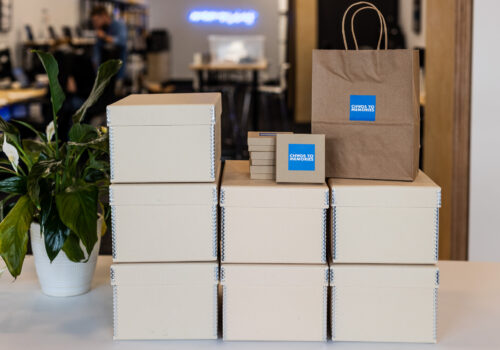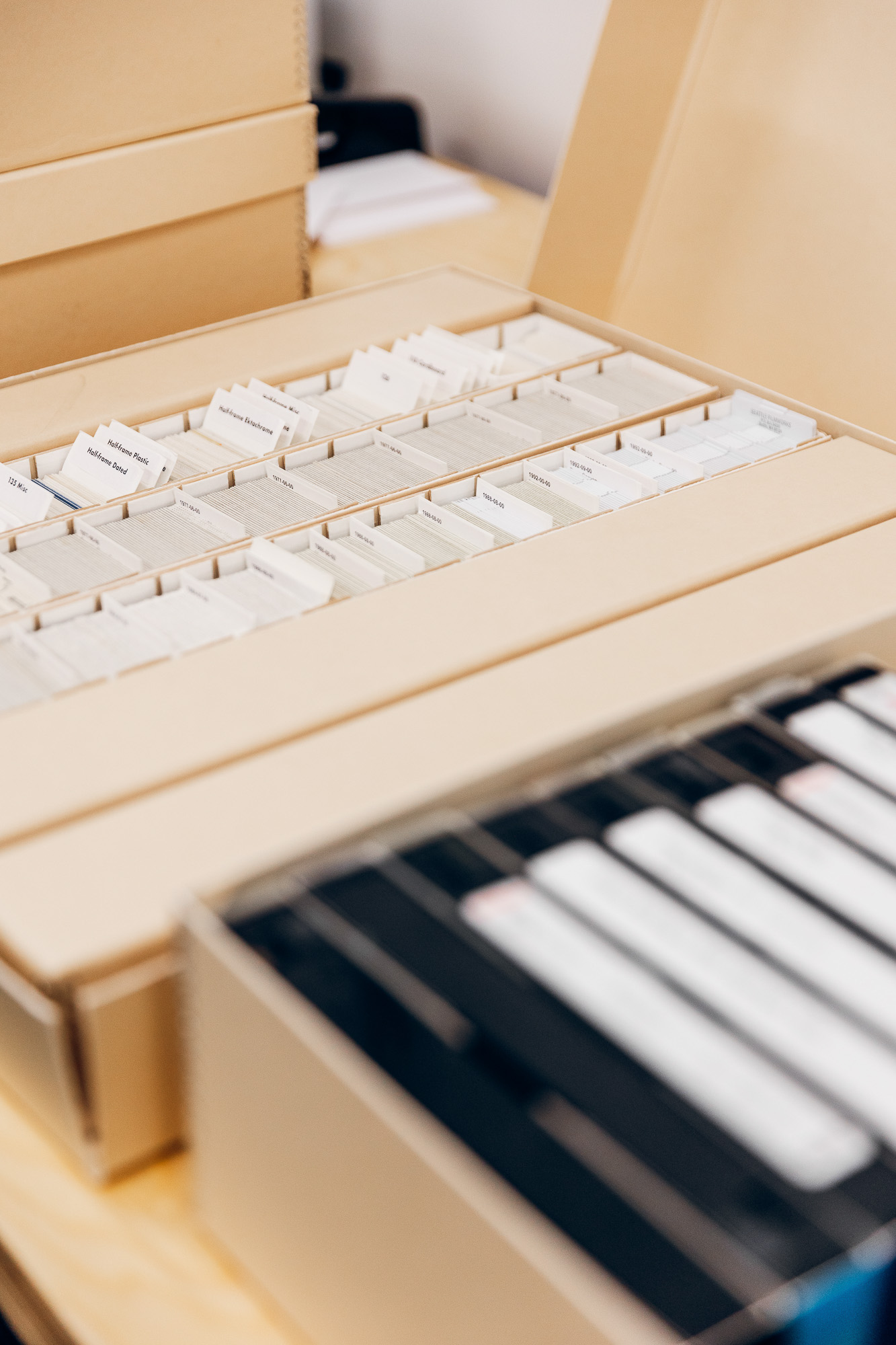After your photos have been scanned and your home movies have been converted, we recommend storing the originals in archival storage materials that are:
- Acid-free: Paper and cardboard where acidic substances have been removed and buffering agents have been added to achieve a pH of 7 or slightly higher.
- Lignin-free: Naturally-occurring acidic substance in wood pulp should be removed to minimize deterioration including yellowing, brittleness, and cracking.
- Good plastics: To minimize the threat of water damage, including floods, leaks, and humidity, you can store your physical photo archive in plastic containers made of polyester, polypropylene, or polyethylene. Do not store your family photos in containers made of PVC (polyvinyl chloride).






What are archival storage materials?
Archival storage materials include negative sleeves, envelopes, boxes, and binders that store original photo prints, slides, negatives, albums, scrapbooks, artwork, video tapes, and film reels. We have relationships with the best vendors in the world and only use professional archival storage materials for client projects. Our archival storage partners will even design and build custom storage for special projects.
What makes archival storage supplies special?
Archival storage supplies use good materials (acid-free, lignin-free, safe plastics, etc.), store photos safely, and are designed to store original photo and video media.
Are archival storage materials worth the extra cost?
Compared with the investment of scanning, converting, and organizing your family memories, the cost of archival storage materials is relatively small and the best way to keep them safe. These storage materials are more expensive than products you’ll find at arts and crafts stores, but they’re the best choice to keep your memories as safe as possible for as long as possible.
Where in my home should I store my original photos?
Archival storage materials help keep your memories safe, but where you store your photos is also very important. Original photos should live where people live. This means no garages, attics, crawlspaces, or unfinished basements. The best place to store them is in a dark, cool, dry location on the main floor of your home. An interior closet away from water, away from food, and not on the floor is one of the best choices.
Can I just throw away the originals after they've been scanned and converted?
They’re your memories, so it’s up to you. Seeing original baby photos, graduation portraits, and wedding albums is a timeless way to enjoy family memories, so we recommend keeping the originals and archival storage is the best way to keep them safe.
If you’re near Chicago and ready to get started, come visit our Wheaton Studio Monday – Friday, 10-5. Please bring your memories with you.
Contact us for more information, shipping instructions, and to get started on your project.
